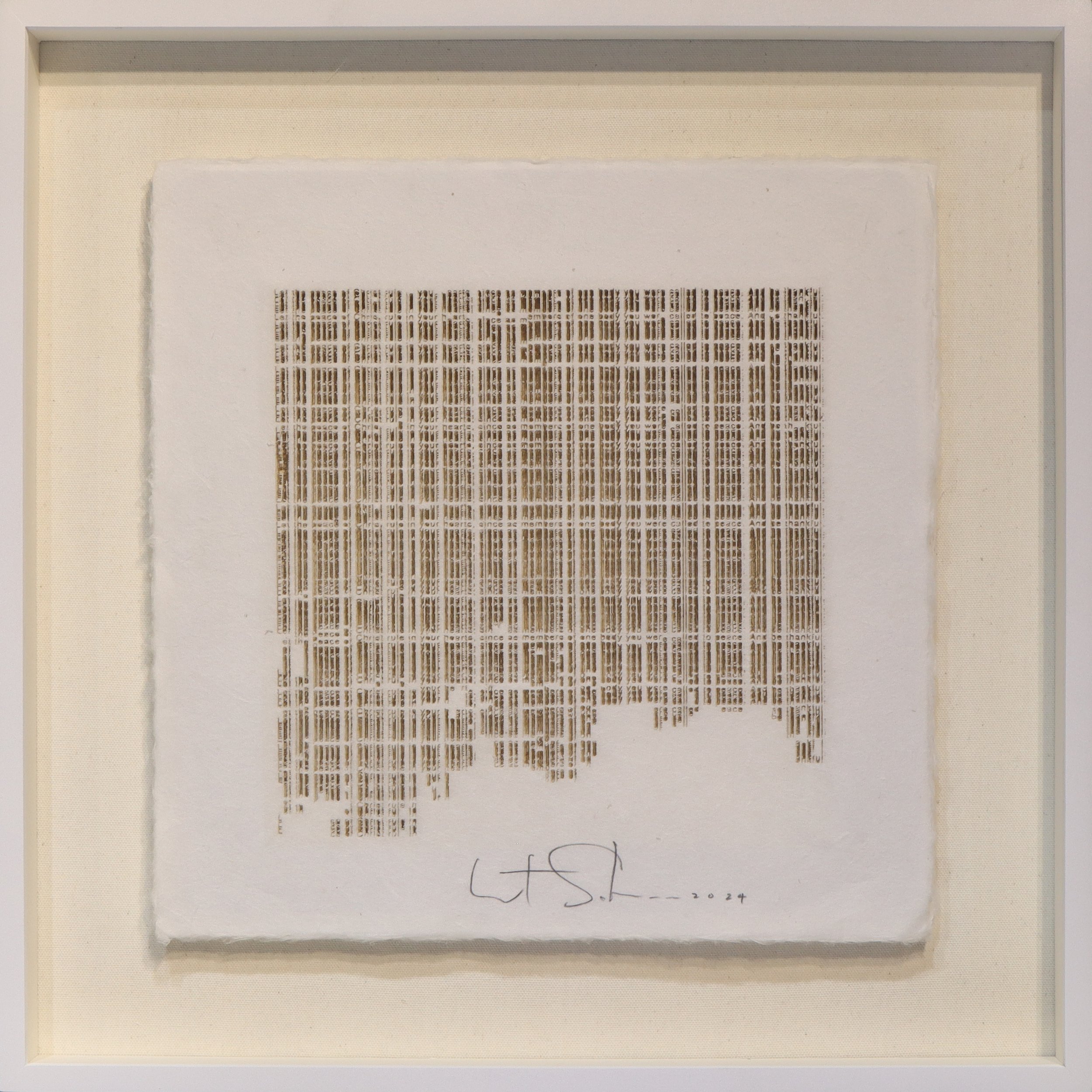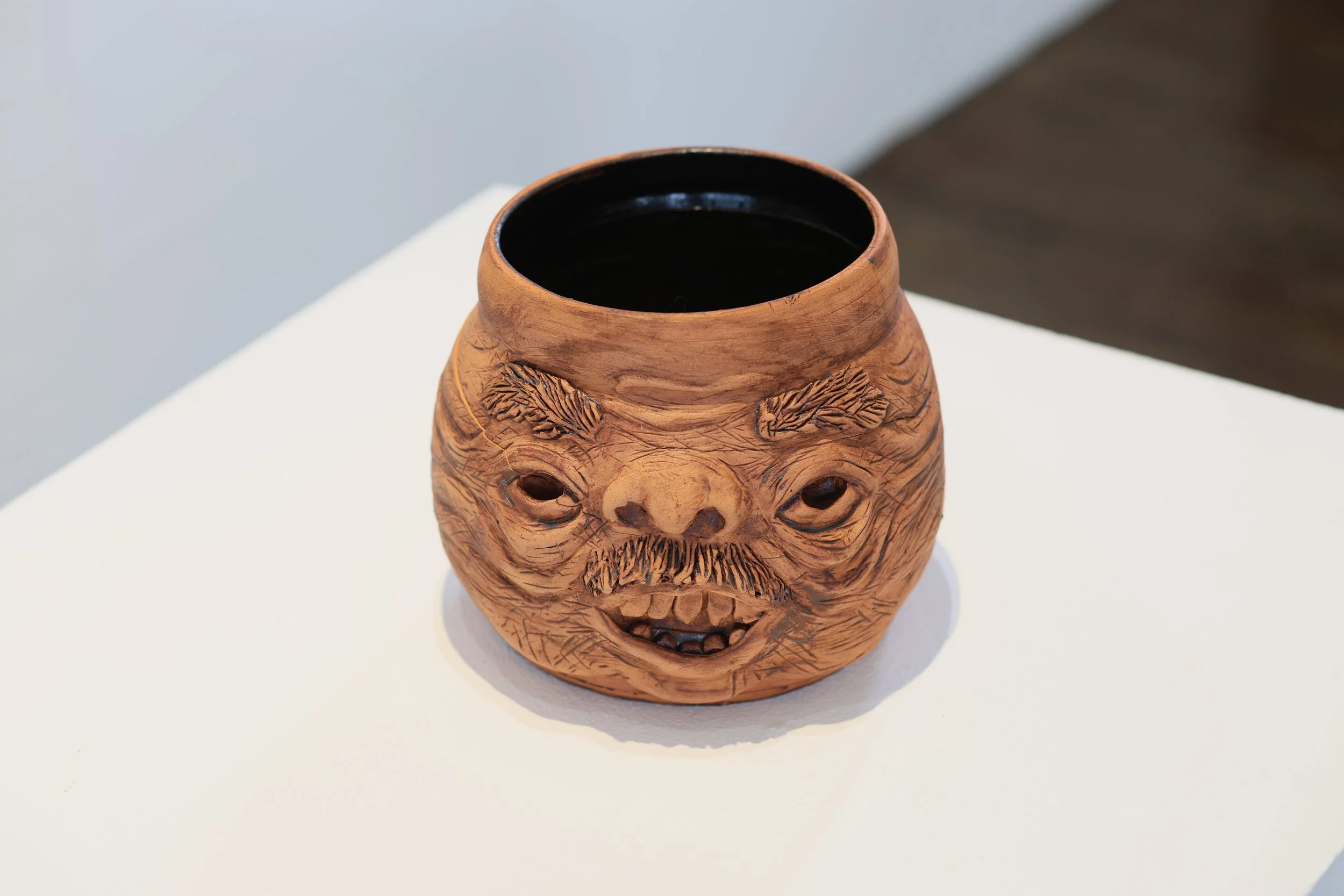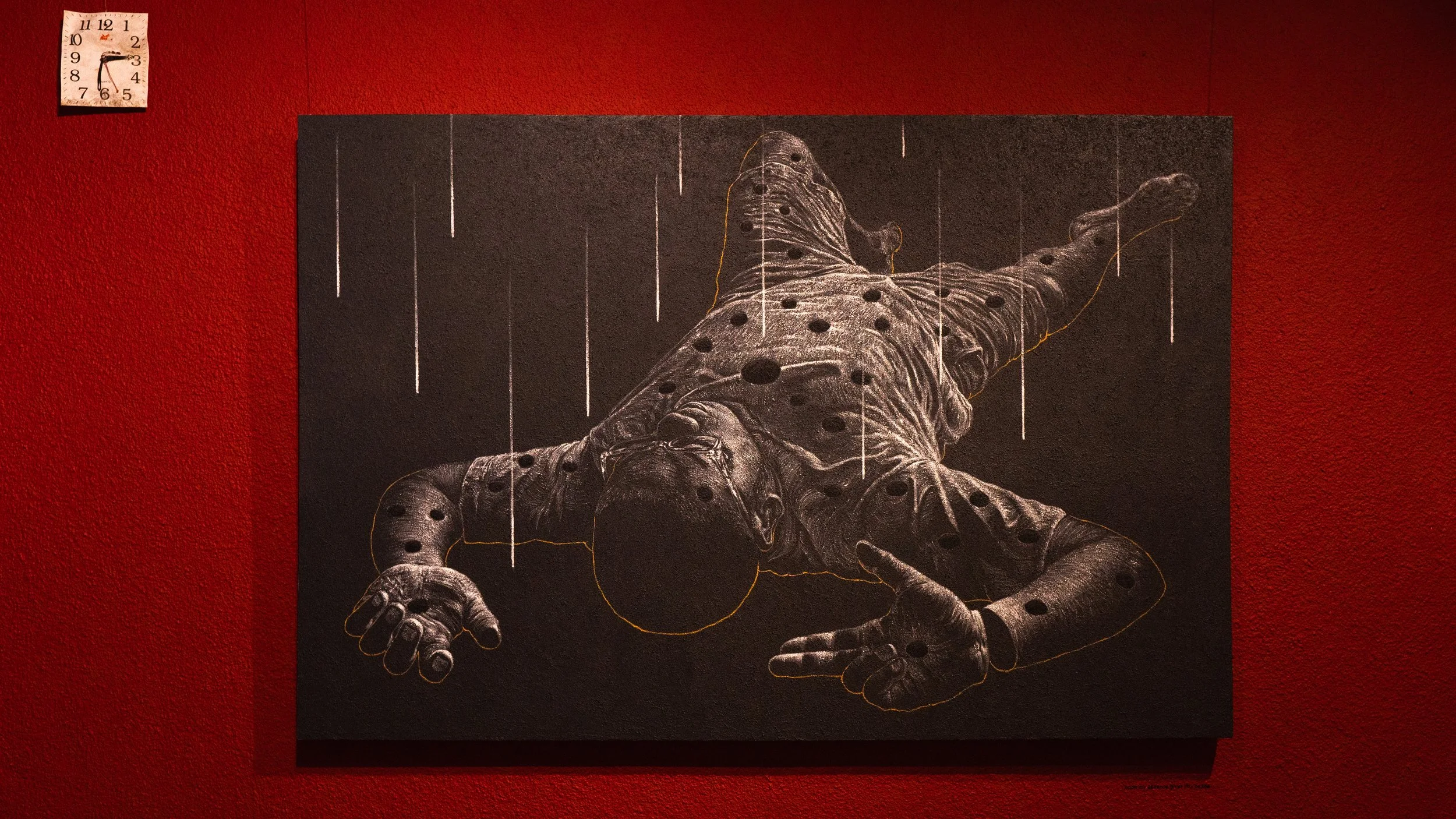Material Matters: Exhibitions in November 2024
Words Amanda Juico Dela Cruz
November 28, 2024
SOLER SANTOS + MONA SANTOS, Untitled 2, 2024, mixed media on canvas, 48h x 71w in, SPI_SSMS002
This list of exhibitions shares a common focus on the transformative power of **materiality** in artistic expression. Each showcases how artists engage deeply with their chosen media—whether traditional, like clay and egg tempera, or cutting-edge, like AI and laser cutting—to explore themes of memory, identity, history, and the human experience. From the intimate, personal reflections in the works of Filipino artists Anita Magsaysay-Ho and Nena Saguil, to the post-human narratives in Wataru Sakuma’s technology-driven pieces, these exhibitions reveal how materials become vehicles for meaning, offering new ways to understand the world through both individual and collective lenses.
Anita Magsaysay Ho - Mga tagapagluto Cooks (1952)
“Material Inspirations” by Anita Magsaysay-Ho and Nena Saguil, and curated by Patrick Flores at Metropolitan Museum of Manila.
Material Inspirations showcases the artistic legacies of Anita Magsaysay-Ho and Nena Saguil, two pioneering Filipino women artists born in 1914. Both trained at the University of the Philippines, they forged distinctive artistic paths in a patriarchal society. Anita, using egg tempera, and Nena, with pen-and-ink, created works that reflect their modernist visions and individual sensibilities. Curated by Patrick Flores, the exhibition delves into their unique media, revealing how their art, shaped by memory, fantasy, and cultural experiences, gains luminosity and depth. Their work embodies a commitment to form, finesse, and vitality, expressing their devotion to both their craft and identity.
“To See A Landscape As It Is” by Soler Santos, Mona Santos, Luis Antonio Santos, Carina Santos, and Isabel Santos at Silverlens Galleries.
In To See A Landscape As It Is, the Santos family’s diverse artistic expressions reflect their unique paths, intertwining personal histories with evolving practices. Soler’s assemblages, using found materials, explore the texture and stillness of nature, while Mona’s delicate floral oil paintings highlight fleeting beauty. Luis Antonio blends painting with other media, creating fragmented, layered works that evoke memory. Carina’s color field paintings and multidisciplinary approaches capture fluid, organic forms, while Isabel’s large-scale, emotional pieces channel personal experiences. Together, their works embody an ongoing exploration of medium, form, and personal sensibility, collectively narrating a shared yet distinct family journey in art.
John 14 27, 3 layers, Version Square
“Crisis in Meaning” by Wataru Sakuma at Modeka Art.
Wataru Sakuma’s work challenges traditional boundaries by exploring paper as a material through a blend of technologies and manual labor. His collection Crisis in Meaning merges CAD, AI, laser cutting, and intuition, creating pieces that evoke a post-human artistic sensibility. Drawing from personal anxieties about geopolitical crises and his son’s exposure to nationalism, Sakuma integrates sacred texts into his work, symbolically represented through numbers tied to religious practices. These intricate objects, at once architectural and meditative, become vessels for meaning, reflecting the artist’s search for a new narrative in the fragmented world order. The objects, like sacred relics, evoke both absence and presence.
“Tigulang” by Ianna Engaño
“Nunology” by Ianna Engaño at Eskinita Art Farm.
Ianna Engano’s Nunology explores life’s cyclical nature and humanity's fragile influence over it. Through anthropomorphic clay jars with smiling, geriatric faces, Engano reflects on the chaotic, yet purposeful, systems of nature. The wrinkles, scars, and laugh lines on her figures symbolize wisdom, experience, and joy—marks of a life well lived. Engano’s craftsmanship, shaped from Tiwi clay, embraces both scientific precision and artistic intuition. Nature itself intervened during Typhoon Kristine, leaving fissures in the sculptures that enhanced their meaning. The work embodies the symbiosis between humans and nature, capturing our shared journey through time, marked by transformation and endurance.
“Shades of Light and Dark” by Teo Cacnio, Denmark dela Cruz, Carlo de Laza, Joshua Limon Palisoc, Ioannis Sicuya, and Chino Yulo, and curated by Arvi Fetalvero at White Walls Gallery.
In Shades of Light and Dark, the relationship between light and form is reimagined to enhance the expressiveness of sculpture. By manipulating light, the work transforms the perception of form, giving static sculptures a sense of movement and vitality. The interplay of light and shadow infuses the pieces with energy, making them appear more dynamic, vibrant, and alive. This exploration elevates the visual experience, suggesting that form is not just a fixed shape but something that evolves and resonates with the surrounding light, creating an ongoing dialogue between the artwork and its environment.
“What Can Be” by Archie Oclos at Anima Art Space.
Archie Oclos’ What Can Be transforms the role of walls in art, seeing them not just as passive canvases, but as active repositories of memory, trauma, and history. Visiting Marawi’s war-torn landscape, Oclos engages with walls marked by violence, decay, and graffiti, recognizing them as silent witnesses to conflict and resilience. Inspired by theories of space as a social construct, Oclos challenges the idea of walls as neutral structures, using them to reflect the deep scars of war and the emotional healing that follows. His work explores walls as symbols of survival, reconciliation, and the collective journey towards recovery.







